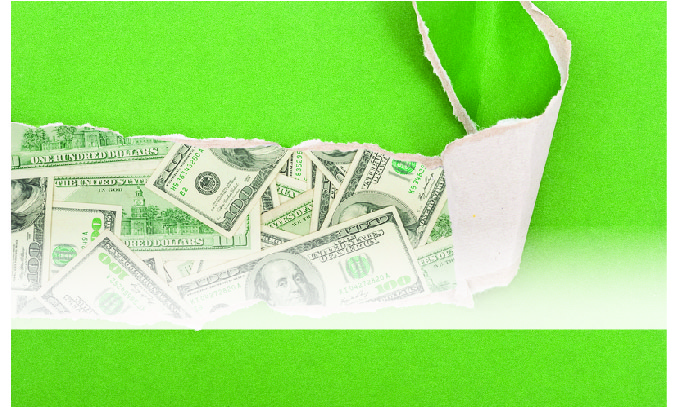
Lien Strips Revisited
Often, a particular motivation for filing a Chapter 13 bankruptcy is the desire to strip off junior deeds of trust and other junior liens on residential real property. However, there are limitations on the amount of secured debt and unsecured debt that a Chapter 13 debtor is allowed to have. When a debtor has debts exceeding those limitations, he or she is not permitted to utilize Chapter 13 bankruptcy. In such a case, a debtor may choose initially to file a Chapter 7, and obtain a discharge of debts to the extent available in Chapter 7. If he or she thereby is able to reduce his or her debts below the limitation amounts, he or she can then file a Chapter 13. This is the so-called “Chapter 20” which is discussed in detail in “Lien Strip Basics and the Evolving Law on ‘Chapter 20’” in the June 2012 issue of Contra Costa Lawyer magazine.
At the time of the prior article, the law was unsettled as to whether or not lien strips were available in the Chapter 20 context. Since that time, the Ninth Circuit has weighed in, holding definitively that lien strips are available in Chapter 20 (subject to the requirement that the filing be in good faith). In Re Blendheim, 803 F.3d 477 (9th Circuit, 2015)1 the Blendheim court held: “that Chapter 20 debtors may permanently void liens upon the successful completion of their confirmed Chapter 13 plan irrespective of their eligibility to obtain a discharge.” Id. at 497.
The argument against allowing lien strips in Chapter 20 typically centered on the provision in 11 U.S.C. §1328(f) that denies a discharge to a Chapter 13 debtor if he or she has received a Chapter 7 discharge within the preceding four years. Also, the previous Ninth Circuit case of In Re Leavitt 171 F.3d 1219 (9th Cir. 1999) had stated:
A Chapter 13 case concludes in one of three ways: discharge pursuant to §1328, conversion to a Chapter 7 case pursuant to §1307(c) or dismissal of a Chapter 13 case “for cause” under §1307(c).” Leavitt, 171 F.3d at 1223.
Some bankruptcy court opinions, such as In Re Victorio, 454 B.R. 759 (2011) had relied upon this statutory provision and this case language to find that, while a Chapter 20 debtor could obtain a lien strip, he or she could not obtain a “permanent” lien strip. The argument went that since discharge and conversion were unavailable, the bankruptcy case could only conclude with a dismissal and that the lien would spring back to life upon dismissal. Of course, a lien strip that is not permanent is the same as no lien strip at all.
Blendheim expressly ruled that the language in Leavitt that states that a Chapter 13 case can end only in one of three ways is dictum and further states: “Our statement in Leavitt should not be read to describe an exhaustive list of ways in which a Chapter 13 case may conclude.” The Blendheim opinion states that there is another possibility: when a plan is completed in a successful Chapter 20, the bankruptcy case can be closed pursuant to 11 U.S.C. §350(a) without conversion, dismissal or discharge. Blendheim 803 F.3d at 493.
The court in Blendheim found it significant that while Congress saw fit to deny a further discharge to Chapter 20 debtors, it did not prohibit outright the filing of a Chapter 13 after a Chapter 7. Thus, the Blendheim court reasons, Congress clearly intended that Chapter 20 debtors could avail themselves of Chapter 13 tools, except where prohibited. While Congress expressly prohibited further discharge, it could have (but did not) prohibit lien strips in the Chapter 20 scenario.
The Blendheim opinion indicates that there is no logical reason to infer a prohibition on Chapter 20 lien strips based upon the prohibition on discharge. A discharge only extinguishes the right to pursue collection against an individual in personam; the discharge has no effect on the in rem right to pursue property pursuant to a lien, which is left in place. (After all, that is the reason lien strips are sought, i.e., the liens would otherwise survive the bankruptcy discharge.) Therefore, the court explained, because discharges have no effect on liens anyway, there is no reason to infer from the prohibition of further discharge a Congressional intent to deny lien strips to the Chapter 20 debtor. The Blendheim court states:
We take Congress at its word when it said in §1328(f) that Chapter 20 debtors are ineligible for a discharge, and only a discharge. Had Congress wished to prevent Chapter 7 debtors from having a second bite at the bankruptcy apple, then it could have prohibited Chapter 7 debtors from filing for Chapter 13 bankruptcy entirely. Blendheim 803 F.3d at 495 (emphasis in original).
The opportunity for lien strips has diminished in the current housing market. However, the housing market is notoriously cyclical and the Blendheim case provides clarity regarding an important tool for bankruptcy debtors for the next time the housing market turns again.
A housekeeping note: Most of the links and references to the Northern District of California’s website in the prior article are no longer valid. Currently, extensive guidance on pursuing a lien strip in the Northern District can now be found at http://www.canb.uscourts.gov/procedure/guidelines-valuing-and-avoiding-liens-individual-chapter-11-cases-and-chapter-13-cases
[1] Blendheim does not represent the classic lien strip scenario in that it involves the stripping of a first deed of trust after a lender had failed to respond to the debtors’ objection to its claim. Because of the unusual fact pattern, Blendheim contains a lot of discussion early in the opinion that is not relevant to the typical lien strip situation. After other arguments, not relevant here, failed, the lender tried to preserve its lien by arguing that a lien strip was not available where a debtor was ineligible for a Chapter 13 discharge, because of the preceding Chapter 7 bankruptcy. This latter discussion is highly relevant to the typical scenario.